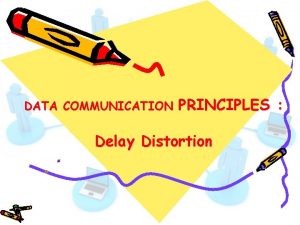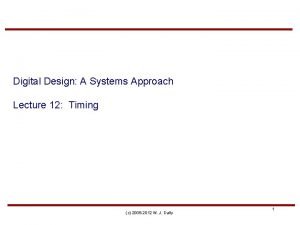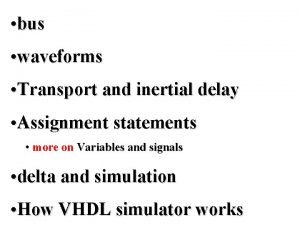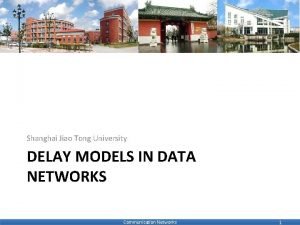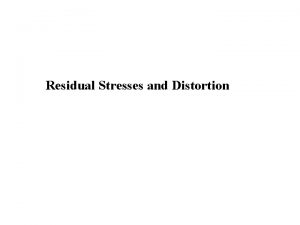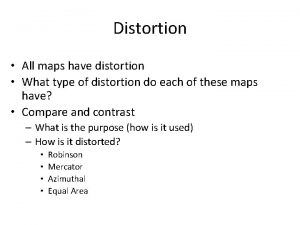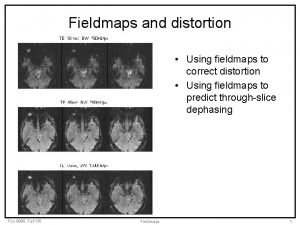DATA COMMUNICATION PRINCIPLES Delay Distortion Delay Distortion A




- Slides: 4

DATA COMMUNICATION PRINCIPLES : Delay Distortion

Delay Distortion A signal can be represented as sum of a number of sinusoids. For a periodic signal, there is a fundamental frequency and its higher harmonics. For an aperiodic function, there are infinite number of frequency components between any two frequencies. When a signal is transmitted from one point to another point, each sinusoidal component of the signal arrives with a phase different from other sinusoidal components of the signal. This difference in phases of the arriving sinusoids causes their sum to be different from the transmitted signal. Thus, as the signal travels from one end to another, the delay suffered by each sinusoidal component in the signal is different,

resulting in a distortion of phase delays at the receiving end. The result of delay distortion is ‘dispersion’ of the signal energy out of its time -limited range. If many signals are transmitted one after the other, then each signal spreads in time. This causes adjacent signals to overlap as they propagate along a medium. For example, in binary transmission, where each signal represents a zero or one, the adjacent pulses may overlap to the extent that the receiver cannot separate them. This phenomenon is called intersymbol interference (ISI) and is a major concern on lines with limited bandwidth, such as telephone lines. Figure 4 -2 shows the concept of dispersion. In order to design a communications system to combat ISI, we have to do several things, such as design pulse shapes and perform equalization. Equalization restores the delay distortion in such a manner that all signal components seem to be arriving at the same time. Equalizers do this by simulating the inverse channel behavior.

REFERENCES • Ahmad A. - Data Communication Principles. For Fixed and Wireless Networks • Cornelius T. Leondes - Database and Data Communication Network Systems, Three-Volume Set_. . -Academic Press
